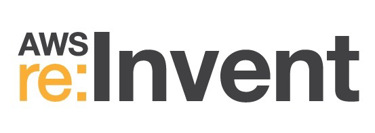Takeaways From AWS re:Invent 2020
By Jeff Collins, 2nd Watch

AWS re:Invent was a little different this year, to say the least. Instead of the typical action-packed week in Las Vegas, AWS broke the event into three weeks of major announcements, all online. With all the turmoil going on in the world, AWS was still able to announce over 140 new products and features at re:Invent 2020. Here are a few highlights, product and otherwise.
Week 1
AWS announced new compute innovations, including MacOS, as well as investments in the processor space with its Graviton 2 processors and Trainium chips. In the meantime, the AWS mindset of “100% cloud all the time” continued to evolve with new options for hybrid environments, including the announcements of ECS and EKS anywhere, which allow customers to run workloads in their own data centers.
Placing compute power closer to the customer (Edge computing) also was an area of focus in Week 1, especially with connectivity providers rolling out 5G. To allow for this evolution, AWS released AWS Wavelength and new options for Outposts (1 and 2U server sizes).
Week 2
Kicking off week two was an infrastructure-specific deep dive with Peter DeSantis of AWS. Given my background in the data center space, I found his keynote extremely interesting. Back before the cloud and even virtual machines existed, servers were deployed into data centers and enterprises ran their mission-critical workloads on them. Some companies deployed and managed their physical infrastructure, some outsourced the management of those environments to MSPs, but the overall principals have not changed over the years. Yes, your workloads run “in the cloud” but behind that are still data centers housing servers, networking gear, storage, cooling, water chillers, power distribution, connectivity, etc.
AWS has taken those principals and scaled them with a focus on redundancy and sustainability to ensure that, if built properly, their customers’ workloads have no single point of failure and can keep running should an outage occur. AWS has not only made strides in the disk storage and processor space, but they also have designed and integrated their switching gear control systems and custom designed, rack installed UPS infrastructure.
On the product side in Week 2, AWS announced AWS Inferentia, a high-performance machine learning chip that powers EC2 Inf1 instances. Inferentia boasts 45% lower costs and 30% higher throughput than comparable GPU based instances and helps Alexa achieve 25% lower end to end latency. AWS Tranium is another high-performance machine learning chip with the most teraflops of compute power for ML that enables a broader set of ML applications.
AWS also announced Redshift ML, which imports trained models into the data warehouse and makes them accessible using standard SQL queries. Companies can use SQL statements to create and train Amazon SageMaker machine learning models using your Redshift data and embed them directly in reports.
Meanwhile, the new Aurora ML enables you to add ML-based predictions to applications via the familiar SQL programming language, so you don't need to learn separate tools or have prior machine learning experience. It provides simple, optimized, and secure integration between Aurora and AWS ML services without having to build custom integrations or move data around.
For companies involved with handling medical data, Amazon Healthlake is worth looking at. With built-in data query, search, and ML capabilities, you can seamlessly transform data to understand meaningful medical information at petabyte scale.
Week 3
Collaboration and remote working were beyond challenging in 2020. In Week 3, AWS announced CloudShell to provide users access to critical resources such as the AWS console, AWS CLI, and even 1GB of persistent storage at no cost. In addition, enhancements to AWS Cloud9 were announced that enable users to develop, run, and debug code from a browser.
To help mitigate potential issues in the future, AWS announced Fault Injection Simulator that sounds more like a load test on steroids utilizing chaos engineering. Chaos engineering allows an application or environment to be pushed to its limits to highlight any potential issues, bottlenecks, or failures before they are pushed into production for end user use.
Conclusion
In summary, AWS re:Invent showed once again why AWS continues to dominate the public cloud market: the company has a singular focus on rapid innovation based on its customers’ requirements. We may not have been standing elbow to elbow with 60,000 of our closest friends, but AWS did a stellar job of bringing us together virtually. Hopefully, in a year, we will be back together and enjoying the wonderful craziness of AWS re:Invent, in Las Vegas style.
About The Author
Jeff Collins is Optimization Product Manager at 2nd Watch.
